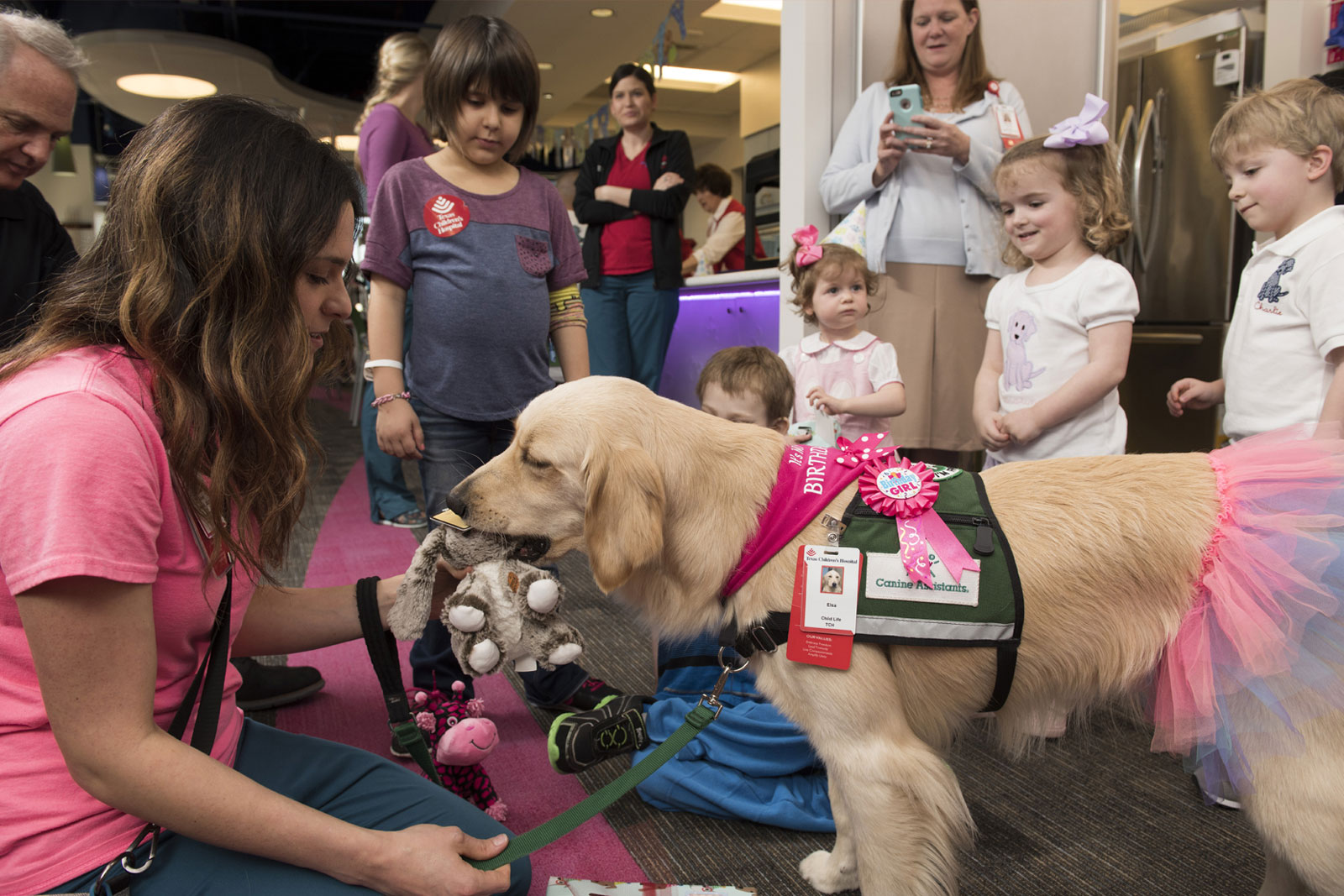

New facility dog program brings comfort to patients
As Madisyn Thompson sat in her hospital room at Texas Children’s Hospital’s West Tower, all she could think about was her surgery the next day. Her mind was flooded with conflicting emotions and thoughts until she got a surprise visit from a furry visitor named Elsa, Texas Children’s facility dog.
“I was so happy to see her and interact with her,” Madisyn said, as she combed her fingers through the soft fur behind Elsa’s ears. “She made my day because she is really lovable and sweet.”
Madisyn is one of many Texas Children’s patients benefitting from the hospital’s facility dog program launched in October 2016, thanks to a generous donation by Bobby and Judy Shackouls. The program uses animal-assisted therapy to improve the emotional well-being of pediatric patients by reducing their anxiety, perception of pain and fear of hospitalization.
“We knew having a facility dog here full time, Monday to Friday, would allow us to target that patient population that could really benefit from and show enhanced outcomes through work with a therapy dog,” said Mary Tietjens, assistant director of Child Life and Social Work.
Elsa is an employee just like any other at Texas Children’s Hospital, starting her shift with her handler, Sarah Herbek, bright and early around 8 a.m. Donning a bright green vest emblazoned with the Texas Children’s badge, Elsa sees patients in West Tower from 9:30 a.m. until 4:30 p.m. with a one-hour lunch break in between visits.
Prior to coming to Texas Children’s, Elsa underwent extensive training with Canine Assistants, a non-profit in Atlanta, GA, that has matched more than 1,500 service dogs including individual and hospital placements. After demonstrating strong competencies geared toward working in a pediatric hospital environment, Elsa spent additional time training at Children’s Hospital of Atlanta working alongside her handler and pediatric patients.
“We provide goal-oriented therapeutic interventions to patients who have been hospitalized due to a traumatic event, such as abuse, or patients who have chronic pain,” said Herbek, a Child Life specialist and animal-assisted therapy coordinator. “We also work alongside physical and occupational therapists to provide a little bit of encouragement and motivation to patients who are rebuilding their motor skills or need to ambulate after surgery.”
For Madisyn, spending a few minutes with Elsa helps her focus less on her illness and more on the unconditional love and comfort that a therapy dog provides.
“It takes my mind off things and distracts me from everything going on and the stress and all the feelings that go through my head when I have spare time to sit and think,” Madisyn said.
Madisyn’s mother couldn’t agree more as she tearfully recalls the heart-warming moment when Elsa walked in to her daughter’s room.
“You see your child, and you see the light going out of their eyes,” Jessica Thompson said. “When Elsa walked in, my daughter’s face lit up. She’s been excited about the whole experience.”




